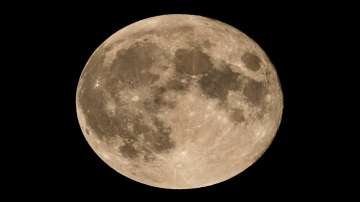China’s moon mission slated to be launched around next year will also carry a payload from Pakistan, the country’s space agency said as both nations look to boost their space sector cooperation.
China’s Chang'e-6 lunar mission is currently undergoing research and development work, news agency PTI reported citing Xinhua which quoted China National Space Administration (CNSA) on Friday. The mission is tasked with bringing samples from the far side of the moon to the earth.
Till today, all 10 lunar sampling missions by the countries have been conducted on the near side of the moon, PTI quoted The Global Times newspaper as saying.
The far side is generally older and contains the Aitken Basin, one of the three major lunar landforms, making it of significant scientific value, the report said, quoting CNSA.
Aim of China's moon mission
The Chang'e-6 mission aims to land on the South Pole-Aitken Basin located on the far side to collect lunar samples from various regions and ages.
To promote international cooperation, the Chang'e-6 mission will carry payloads and satellite projects from different countries and regions - France's DORN radon detection instrument, the European Space Agency's negative ion detector, Italy's laser retroreflector, and Pakistan's CubeSat, the CNSA said.
CubeSat is Pakistan’s miniaturised satellite.
Pakistan is mulling the possibility of a formal agreement to join the Tiangong space station, as well as the more ambitious China-led base on the lunar South Pole, PTI reported citing the Dawn newspaper’s report last month.
China plans to launch its newly developed relay satellite Queqiao-2, or Magpie Bridge-2, in the first half of 2024 aiming to support the communications between the moon's far side and the Earth, PTI reported citing Xinhua report.
India’s Chandrayaan-3
India’s lunar mission Chandrayaan-3 landed on the moon on August 23, scripting history. With its landing on the moon, India became the fourth country to achieve this feat to touchdown on the moon and the first country to do so on the South pole. Before this, only the US, Russia and China have successfully landed on the moon.
Chandrayaan-3 spacecraft carried a range of technologies with a total payload mass of approximately 3,895 kilograms. The technologies included laser and RF-based altimeters, velocimeters, throttleable liquid engines, hazard detection, and avoidance systems, and a landing leg mechanism. Taking special measures, ISRO improved the onboard equipment in a bid to avoid any issues during the soft landing on the Moon. The lander underwent a number of changes to be able to handle higher landing velocities.
Earlier last month, the Indian Space Research Organisation (ISRO) said that Chandrayaan 3's Pragyaan Rover has completed its assignments on the lunar surface. The rover was put on the sleep mode. The ISRO attempted to re-establish connection with the rover after the sunrise on the moon, however, no connection was established.
(With PTI inputs)
Latest World News
